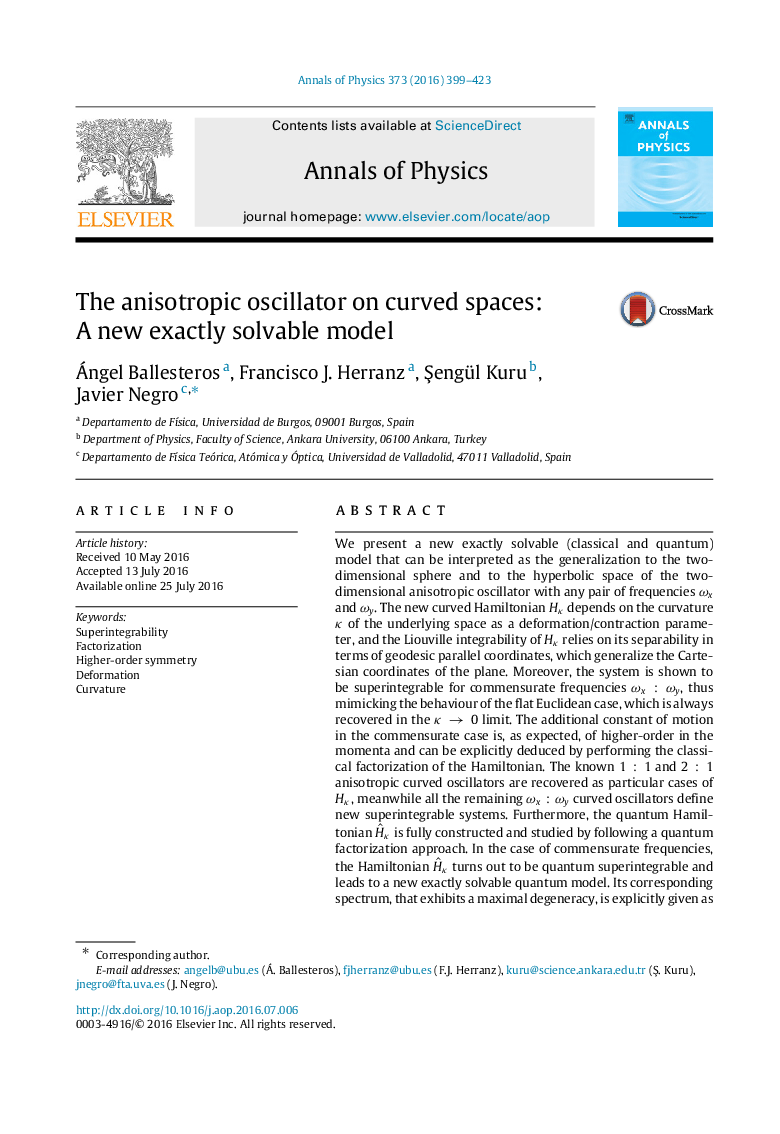| Article ID | Journal | Published Year | Pages | File Type |
|---|---|---|---|---|
| 1856374 | Annals of Physics | 2016 | 25 Pages |
We present a new exactly solvable (classical and quantum) model that can be interpreted as the generalization to the two-dimensional sphere and to the hyperbolic space of the two-dimensional anisotropic oscillator with any pair of frequencies ωxωx and ωyωy. The new curved Hamiltonian HκHκ depends on the curvature κκ of the underlying space as a deformation/contraction parameter, and the Liouville integrability of HκHκ relies on its separability in terms of geodesic parallel coordinates, which generalize the Cartesian coordinates of the plane. Moreover, the system is shown to be superintegrable for commensurate frequencies ωx:ωyωx:ωy, thus mimicking the behaviour of the flat Euclidean case, which is always recovered in the κ→0κ→0 limit. The additional constant of motion in the commensurate case is, as expected, of higher-order in the momenta and can be explicitly deduced by performing the classical factorization of the Hamiltonian. The known 1:11:1 and 2:12:1 anisotropic curved oscillators are recovered as particular cases of HκHκ, meanwhile all the remaining ωx:ωyωx:ωy curved oscillators define new superintegrable systems. Furthermore, the quantum Hamiltonian Hˆκ is fully constructed and studied by following a quantum factorization approach. In the case of commensurate frequencies, the Hamiltonian Hˆκ turns out to be quantum superintegrable and leads to a new exactly solvable quantum model. Its corresponding spectrum, that exhibits a maximal degeneracy, is explicitly given as an analytical deformation of the Euclidean eigenvalues in terms of both the curvature κκ and the Planck constant ħħ. In fact, such spectrum is obtained as a composition of two one-dimensional (either trigonometric or hyperbolic) Pösch–Teller set of eigenvalues.
